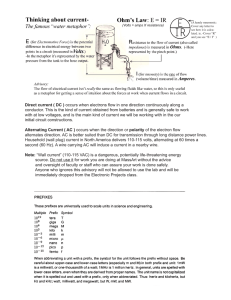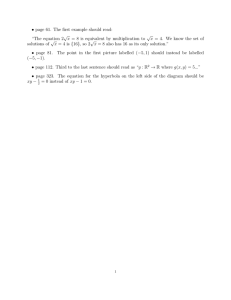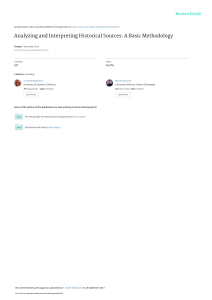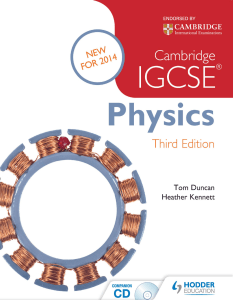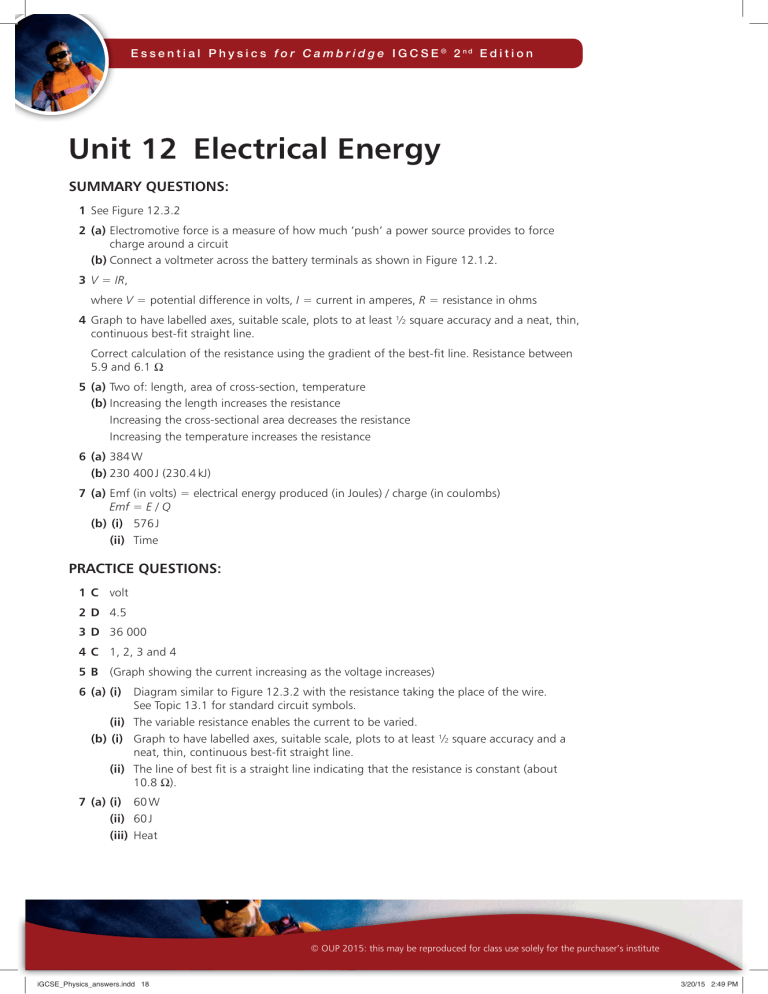
E s s e n t i a l P h y s i c s f o r C a m b r i d g e I G C S E ® 2 nd E d i t i o n Unit 12 Electrical Energy SUMMARY QUESTIONS: 1 See Figure 12.3.2 2 (a) Electromotive force is a measure of how much ‘push’ a power source provides to force charge around a circuit (b) Connect a voltmeter across the battery terminals as shown in Figure 12.1.2. 3 V = IR, where V = potential difference in volts, I = current in amperes, R = resistance in ohms 4 Graph to have labelled axes, suitable scale, plots to at least ½ square accuracy and a neat, thin, continuous best-fit straight line. Correct calculation of the resistance using the gradient of the best-fit line. Resistance between 5.9 and 6.1 Ω 5 (a) Two of: length, area of cross-section, temperature (b) Increasing the length increases the resistance Increasing the cross-sectional area decreases the resistance Increasing the temperature increases the resistance 6 (a) 384 W (b) 230 400 J (230.4 kJ) 7 (a) Emf (in volts) = electrical energy produced (in Joules) / charge (in coulombs) Emf = E / Q (b) (i) 576 J (ii) Time PRACTICE QUESTIONS: 1 C volt 2 D 4.5 3 D 36 000 4 C 1, 2, 3 and 4 5 B (Graph showing the current increasing as the voltage increases) 6 (a) (i) Diagram similar to Figure 12.3.2 with the resistance taking the place of the wire. See Topic 13.1 for standard circuit symbols. (ii) The variable resistance enables the current to be varied. (b) (i) Graph to have labelled axes, suitable scale, plots to at least ½ square accuracy and a neat, thin, continuous best-fit straight line. (ii) The line of best fit is a straight line indicating that the resistance is constant (about 10.8 Ω). 7 (a) (i) 60 W (ii) 60 J (iii) Heat © OUP 2015: this may be reproduced for class use solely for the purchaser’s institute iGCSE_Physics_answers.indd 18 3/20/15 2:49 PM E s s e n t i a l P h y s i c s f o r C a m b r i d g e I G C S E ® 2 nd E d i t i o n (b) (i) (ii) When the resistance increases the applied voltage stays the same so the current is reduced (V = IR), therefore the bulb dims. (iii) Ammeter 8 (a) Property Effect of increase in property on resistance Temperature Increases Length Increases Cross-sectional area Decreases Resistivity (material dependent) Increases (b) (i) 0.64 A. (ii) 7.8 Ω (iii) The temperature of the wire increases due to the heating effect of the current passing through the wire. © OUP 2015: this may be reproduced for class use solely for the purchaser’s institute iGCSE_Physics_answers.indd 19 3/20/15 2:49 PM
